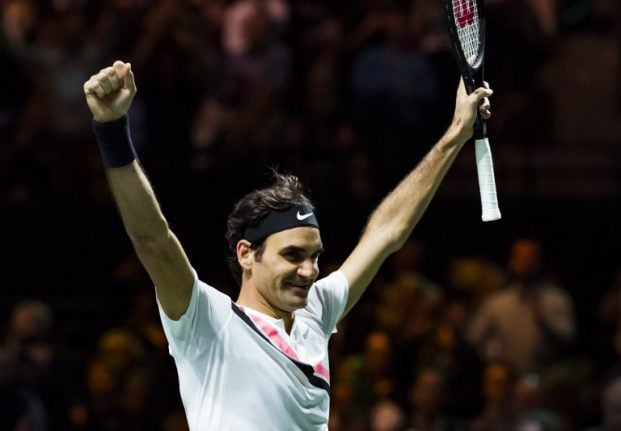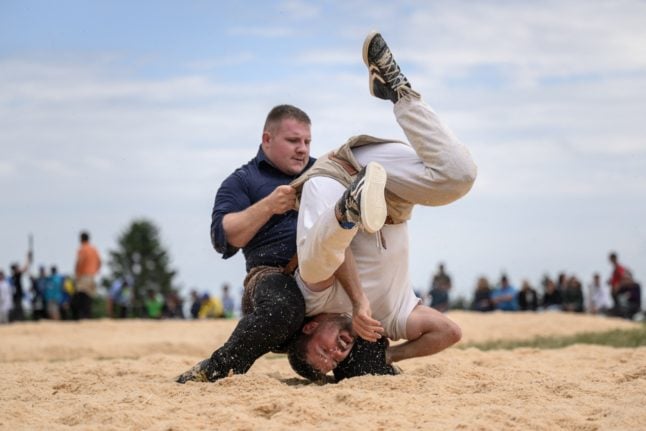The 36-year-old, the oldest No.1 in history, thrashed ailing Bulgarian Grigor Dimitrov 6-2, 6-2 in a one-sided final.
In the Open era, only American Jimmy Connors has won more titles with 109.
“What a fantastic week,” top seed Federer said. “The goal at start of week was to make it to the semi-finals. This is absolutely amazing, I'm really pleased.”
“It's unbelievable to be number one again after all these (six) years – this is one of the best weeks of my life.”
Thank you Rotterdam! You broke the record for attendance.. 120k people! It was an amazing atmosphere ???? pic.twitter.com/yAVl8woRgH
— Roger Federer (@rogerfederer) February 18, 2018
Federer, the record 20-time Grand Slam winner, will officially reclaim the number one ranking he last held in October 2012 when the new ATP rankings are published on Monday.
He has played two tournaments this year and won both – the other being January's Australian Open which he won for the sixth time.
“I saved the best for last,” added Federer, who has a 12-0 record on the season, before jetting home to his family.
“I had a great first match and a great last match. In between it was a battle, it was nerve-wracking getting back to number one. But I was able to manage my nerves and the expectations.
“I was able to handle that pressure, today I played great from the beginning.”
Federer is three years older than American Andre Agassi was when previously holding the record for oldest No.1 back in 2003.
Next step 100 titles
As for chasing down Connors's record of 109 titles, Federer said his first objective was to get to 100.
“97 is not 100 yet, you've got to stay healthy if you want to get close to finals. Things can evaporate quickly,” warned Federer.
Sunday was Federer' third title in Rotterdam following successes in 2005 and 2012 and he now stands 12-0 for the season.
For the first time in a long time, welcome back to the top @rogerfederer ? pic.twitter.com/qjqmxwmSj5
— ATP World Tour (@ATPWorldTour) February 16, 2018
The iconic Swiss star needed just 55 minutes to dispatch Dimitrov who looked to be under-cooked in the quickfire final.
Federer now stands a perfect 7-0 over the Bulgarian in their head-to-head series.
“I was expecting a tough final, but I could see that Grigor was not at his best midway through. He's a great player and a great athlete and has been playing well recently.
“I was able to improve my tennis today when I needed to, I was able to take advantage. I'm very, very happy.”
Dimitrov refused to blame any kind of physical or fitness problem for his weak showing although tournament director Richard Krajicek said that the player had been sick.
“Overall, it was a good week, I just came up short today. Anything can happen out there, all credit to Roger. He's back to number one, played well all week and kept raising the bar,” he said.
Federer will now decide within a few days whether or not to travel to Dubai for the ATP event starting a week from Monday.
He has a home and training base in the UAE and has won the hardcourt tournament seven times.
His effort in Rotterdam appeared to take little out of him physically, with his only loss of a set coming in the quarter-final against Robin Haase.



 Please whitelist us to continue reading.
Please whitelist us to continue reading.